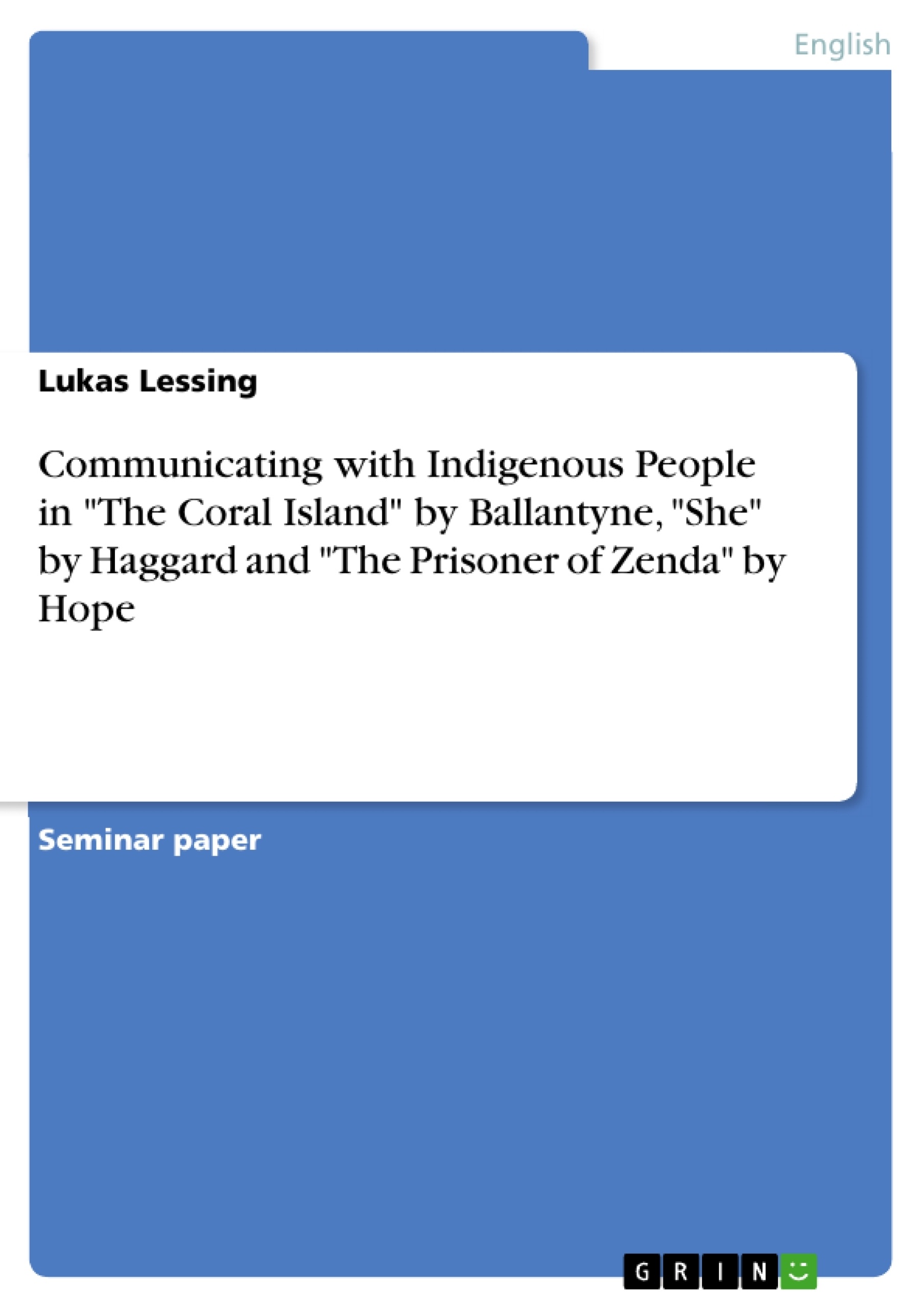Adventurers make a lot of acquaintances. On their travels, they stand up to cannibals of the South Pacific, live together with an African tribe or even disguise themselves as monarch of a fictitious Ruritanian folk. With whomever the protagonists get in touch, they cannot get around communicating. Thus, a lot of communication processes are also displayed in the three Victorian novels The Coral Island (1858) by Robert M. Ballantyne, She (1887) by H. Rider Haggard and The Prisoner of Zenda (1894) by Anthony Hope.
These communication processes, however, do not solely restrict themselves to spoken language, but also embody the mimic and gestural features of the body language. In terms of the former, it is striking that in each of the abovementioned novels, the language of the indigenous population is different to that of the adventurous main characters. Instead of their mother tongue, the adventurers are confronted with Arabic, Greek, Hebrew and Latin; with German and even with “dialects of the language peculiar to the South Sea Islanders” (Ballantyne 215). Since such a diversity of languages can also lead to communicational problems, it will be interesting to see how the characters can cope with misunderstandings or a limited vocabulary.
Inhaltsverzeichnis (Table of Contents)
- Introduction
- The Coral Island
- She
- The Prisoner of Zenda
- Conclusion
Zielsetzung und Themenschwerpunkte (Objectives and Key Themes)
This paper analyzes the communication processes displayed in three Victorian novels: The Coral Island, She, and The Prisoner of Zenda. It aims to illustrate the challenges and strategies of intercultural communication in these fictional narratives, focusing on the linguistic qualifications of both adventurers and indigenous populations.
- Intercultural Communication Challenges
- Language Barriers and Misunderstandings
- Nonverbal Communication and Gestures
- Adaptation of Cultural Norms
- Overcoming Communicative Obstacles
Zusammenfassung der Kapitel (Chapter Summaries)
The Coral Island explores the communication dynamics between three young survivors and the indigenous cannibalistic population they encounter. Despite language barriers, the characters establish communication through nonverbal signs, gestures, and the adaptation of cultural practices like greetings. This chapter focuses on the role of nonverbal communication in bridging the gap between the adventurers and the natives.
The chapter on She delves into the communication patterns between the adventurers and the Queen of the land, Ayesha. The text highlights how the characters navigate language barriers, drawing on their knowledge of various languages like Arabic, Greek, and Hebrew. This chapter explores the use of multiple languages as a tool for intercultural communication.
The Prisoner of Zenda presents a unique perspective on communication through the interactions between the protagonist, Rudolf Rassendyll, and the Ruritanian population. The chapter examines how the protagonist adopts the language and customs of the Ruritanian society to blend in and achieve his goals. This chapter focuses on the role of language and cultural adaptation in building trust and navigating social situations.
Schlüsselwörter (Keywords)
This paper examines key themes in Victorian literature, specifically the role of intercultural communication in adventure narratives. The analysis focuses on linguistic challenges, nonverbal communication strategies, and the cultural adaptations employed by characters in overcoming communication barriers. Key concepts include the languages of various indigenous groups, nonverbal cues, and the dynamics of cultural exchange.
- Quote paper
- Lukas Lessing (Author), 2017, Communicating with Indigenous People in "The Coral Island" by Ballantyne, "She" by Haggard and "The Prisoner of Zenda" by Hope, Munich, GRIN Verlag, https://www.grin.com/document/367782



